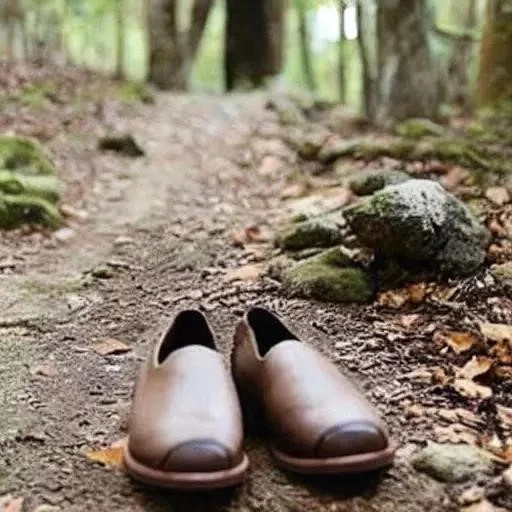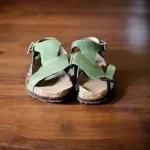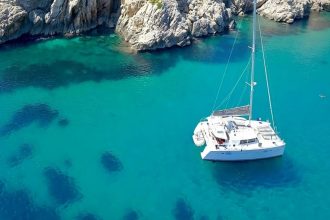For decades, the ritual of lacing up sturdy boots has been an almost sacred prelude to any serious trek into the wilderness. This deeply ingrained tradition, however, is now facing a fascinating and incredibly convenient challenge. Enter the world of slip-on hiking shoes, a burgeoning category poised to redefine our relationship with the great outdoors. These innovative designs are not merely about convenience; they represent a significant leap in footwear technology, blending robust performance with unparalleled ease of use.
Trail enthusiasts, always seeking efficiency and comfort, are increasingly gravitating towards footwear that offers both robust performance and effortless wearability. The idea of quickly slipping into capable trail gear, bypassing fiddly laces after a long drive or a quick break, resonates powerfully with modern adventurers. This isn’t just about speed; it’s about an elevated experience, minimizing friction points both literally and figuratively on the journey, allowing for more time immersed in nature’s embrace.
| Category | Details & Examples |
|---|---|
| Concept | Hiking footwear designed for easy on-and-off, eliminating traditional laces while maintaining trail-worthy performance. |
| Key Benefits | Unparalleled convenience, quick transitions, lightweight design, enhanced breathability, versatility for varied activities (hiking, camping, travel). |
| Common Features |
|
| Types & Applications |
|
| Leading Brands | Merrell (e.g., Hydro Moc), Hoka (e.g., Recovery Slides with trail features), Keen, Teva, Salomon (in some specific models). |
| Reference | Switchback Travel: Best Hiking Shoes (often features slip-on hybrids) |
The Evolution of Outdoor Footwear: From Laces to Liberated Trails
Historically, hiking footwear prioritized rigid support and unyielding durability above all else, often at the expense of agility and user-friendliness. The belief was that only a tightly laced boot could offer the necessary protection and stability for challenging terrain. But as materials science has advanced remarkably, and manufacturing processes have become incredibly sophisticated, designers are now crafting footwear that masterfully balances these once-conflicting attributes. We are witnessing a paradigm shift, driven by innovative textiles and groundbreaking sole technologies, making the seemingly impossible—a high-performing slip-on—a tangible reality.
Industry leaders, acutely observing evolving consumer preferences, have invested heavily in research and development. Sarah Chen, a renowned footwear ergonomist, emphasizes, “Modern slip-on designs aren’t merely glorified slippers; they’re engineered marvels, incorporating advanced arch support and proprietary traction systems previously exclusive to lace-up models.” Brands like Merrell with their increasingly popular Hydro Mocs or Hoka’s recovery slide-inspired trail shoes are prime examples, showcasing how convenience doesn’t compromise capability but rather enhances the overall user experience. These innovations reflect a deeper understanding of biomechanics and the diverse demands of outdoor enthusiasts.
Beyond Convenience: Performance and Safety on Every Path
Skeptics might question the security of a laceless design on rugged terrain, but contemporary slip-on hiking shoes are meticulously designed to counter such concerns. Featuring snug, elasticated collars and sophisticated heel-retention systems, these shoes offer a surprisingly secure, “second-skin” fit that minimizes slippage even on uneven paths. Their meticulously engineered outsoles, boasting multi-directional lugs and incredibly sticky rubber compounds, provide exceptional grip across diverse surfaces, from slick rocks to muddy trails. This robust construction ensures that explorers can confidently tackle challenging environments without hesitation.
Think of it like a high-performance sports car moving from a manual to an automatic transmission: the core power and capability remain, but the interface becomes smoother, more intuitive, and ultimately, more accessible. For day hikers, campers, or even thru-hikers needing a comfortable camp shoe that can still tackle short excursions, these offerings are proving remarkably versatile and indispensable. The freedom of movement, combined with unwavering support, is truly transformative, allowing adventurers to focus entirely on the beauty surrounding them, rather than on their feet.
The Future is Frictionless: Stepping Towards a New Horizon
Looking ahead, the trajectory for slip-on hiking shoes is undeniably upward. We anticipate further integration of smart materials, perhaps even adaptive fit technologies that mold to the foot over time, enhancing both comfort and security with personalized precision. Sustainability will also play a pivotal role, with brands increasingly utilizing recycled components and eco-friendly manufacturing processes to craft these innovative solutions, aligning with a broader commitment to protecting the very environments we explore. The convergence of technology and environmental consciousness is shaping a brighter future for outdoor gear.
The era of cumbersome lacing is slowly but surely giving way to a more fluid, intuitive approach to outdoor footwear. By embracing the remarkable advancements in design and engineering, slip-on hiking shoes are not just a fleeting trend; they represent a significant, forward-thinking evolution in how we connect with nature. They promise an unburdened, exhilarating journey, beckoning us to step into adventure with unprecedented ease and confidence, making every trail accessible and every moment more enjoyable.






